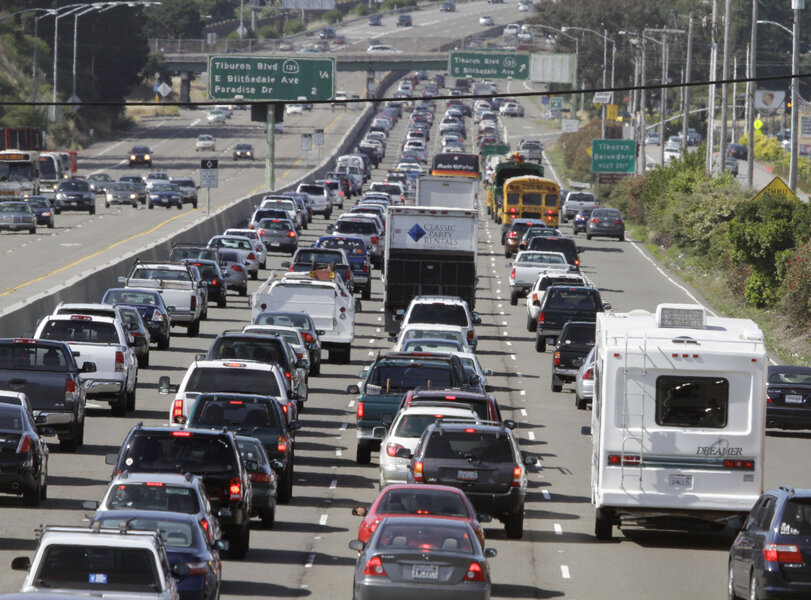Need for speed? Pennsylvania raises speed limit to 70 m.p.h.
Loading...
As of Tuesday, 997 miles of highway in Pennsylvania will have a speed limit of 70 miles per hour (m.p.h.).
The Pennsylvania Turnpike Commission and the Pennsylvania Department of Transportation (PennDOT) approved a 70-m.p.h. speed limit for 396 miles of the Turnpike and 400 miles of the additional highways Tuesday, adding to the 201 miles of road approved for the higher speed since 2014.
“Before moving ahead,” says PennDOT Secretary Leslie S. Richards in a press release, “we looked very closely at a number of factors, such as speed and traffic data and the physical characteristics of the highways, in deciding where 70 m.p.h. limits could be safely permitted.”
Pennsylvania Turnpike Commission Chairman Sean Logan tells PennLive that the increase seemed like a “natural fit” for the Turnpike because the majority of approved highway is only experiencing a five-m.p.h. increase, with a previous speed limit of 65 m.p.h. And the vast majority of drivers, he adds, “are already going 70 m.p.h.” anyway. Now a 70-m.p.h. speed limit will be posted on almost 90 percent of the 552-mile turnpike.
But other state leaders, drivers, and safety officials disagree. Regardless of PennDot’s analyses of traffic loads and roadway geometry, higher speeds mean greater risks.
“As speed limits and speeds go up, a driver’s reaction time is limited,” Jonathan Adkins, executive director of the Governors Highway Safety Association, told Pew Charitable Trusts in a report last year. “The crash is more likely to be severe. Those laws of physics haven’t changed. You’re not able to react to what that guy or gal next to you is doing. They might be on their cellphone or be impaired. They might pull right in front of you and you have to be able to react to that.”
Adkins says highway safety has witnessed serious improvement in recent decades: Traffic deaths are down 25 percent from 10 years ago, with more people wearing seat belts and fewer people driving drunk. But despite this progress, speed-related fatalities persist.
The World Health Organization (WHO) attributes 30 percent of road fatalities in high-income counties to speed levels. And with an increase in average speed of one kilometer per hour (or .62 m.p.h.), says WHO, there is a three percent higher risk of a crash-related injury and a four to five percent increase of a crash-related fatality.
Pennsylvania is not alone. According to GHSA, Pennsylvania is the 18th state to allow speed limits at or over 70 m.p.h. on urban interstates and the 41st state to allow speeds of at least 70 m.p.h. on rural interstates.
“People like to go fast,” Russ Rader, spokesman for the Insurance Institute for Highway Safety, told Pew. “Lawmakers like to deliver something that’s popular to their constituents. But states should be vigorously enforcing the speed limits they have, not raising them.”
State officials say it is not a blanket increase. Under Act 89, the state’s comprehensive transportation bill passed in 2013, a speed limit increase to 70 m.p.h. is only permitted after PennDot has reviewed safety studies for the specific area of highway. Certain areas not approved for a higher maximum speed, such as the Turnpike’s five tunnels, work zones, and stretches of highway with frequent heavy traffic, will remain at 55 m.p.h. because of safety concerns.
“Motorists should not look at this change as consent to speed; in fact, it’s a vital as ever to drive sensibly, to avoid distractions and to buckle up,” Logan, Pennsylvania Turnpike Chairman, said in a press release. “And remember, 70 m.p.h. – or any posted speed limit for that matter – is the maximum speed; you should drive slower when traffic, weather or road conditions demand it.”








